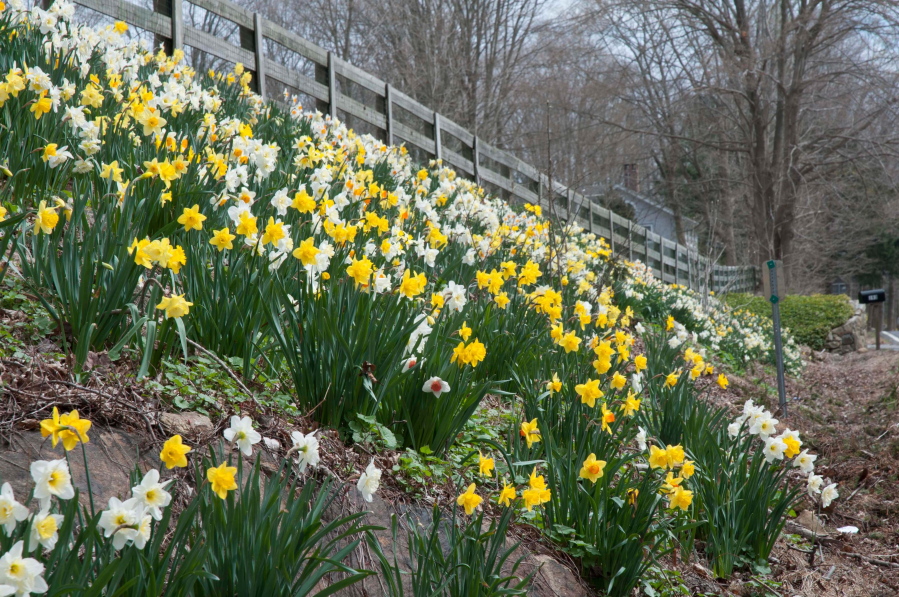Volunteers in a small New York community are planting massive drifts of daffodils this fall to paint their springtime roadsides golden. In the process, they’ve connected residents and helped groups in other areas create similar beautification programs.
The landscaping project, called Golden Roads Daffodils, is being shaped in and around South Salem, N.Y., an hour’s drive north of New York City.
Members of the Lewisboro Garden Club and others have planted over 38,000 daffodils along local roads over an 11-year period, while motivating homeowners to buy and plant 38,000 additional bulbs on their own properties.
“The project makes people feel good, while at the same time transforms the community,” said George Scott, a retired businessman and one of the early organizers.



